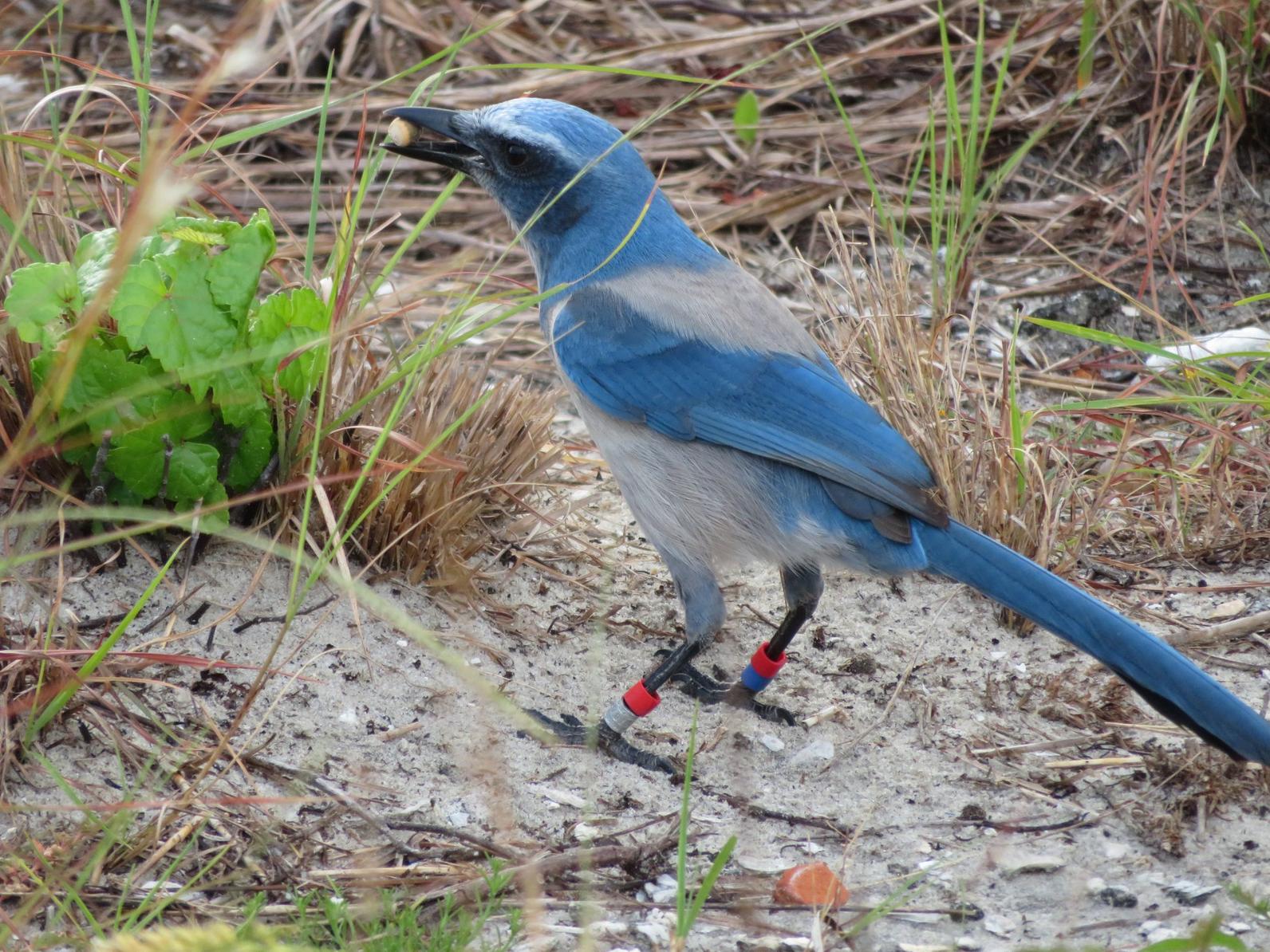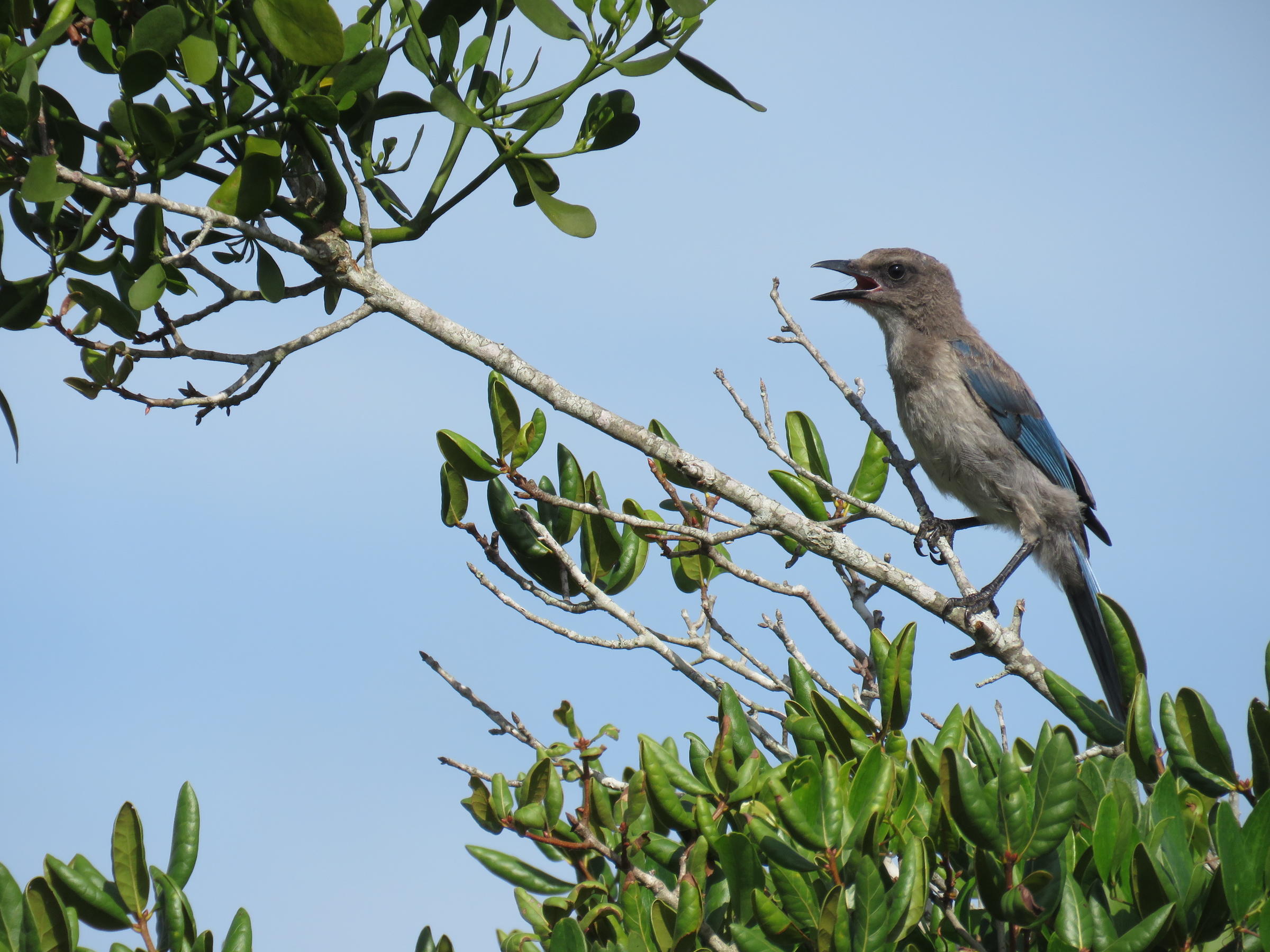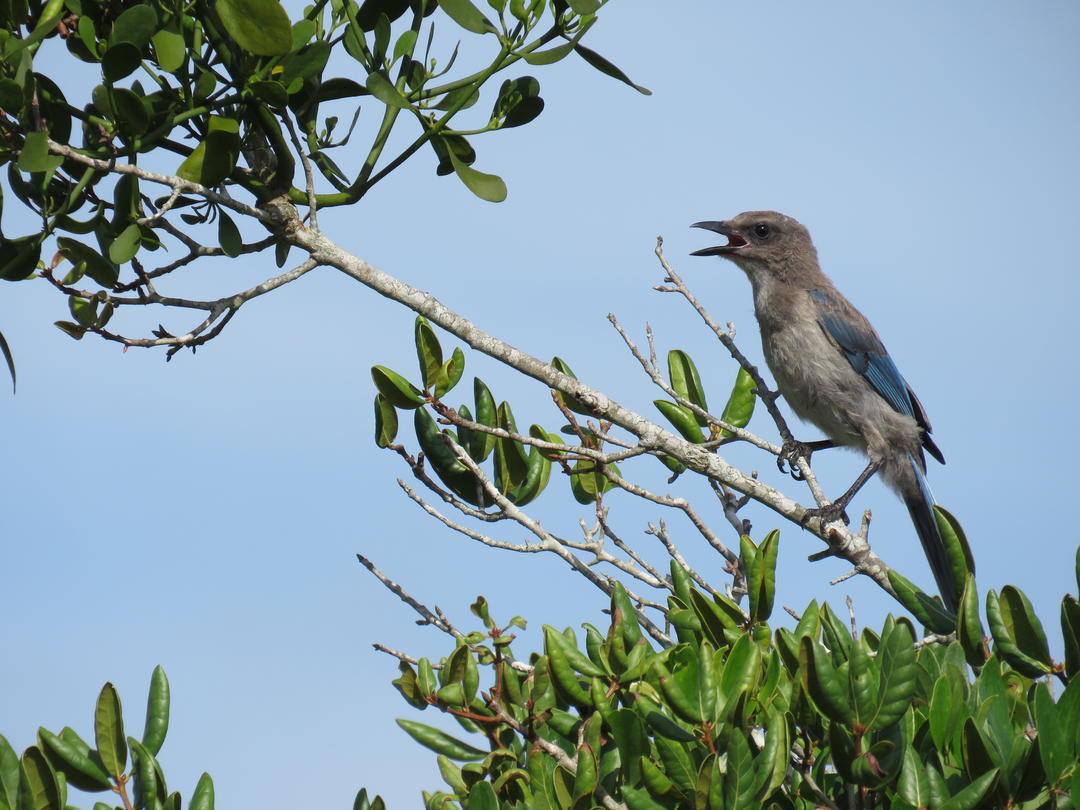At the end of November, Jay Watch volunteers from far and wide gathered at the Archbold Biological Station to celebrate another successful summer season of mapping Florida Scrub-Jay cooperative family groups at over 40 sites on the Florida peninsula.
Florida Scrub-Jays are the Sunshine State’s only endemic species. A handsome bird, the jay is curious and loud, with a blue head, blue wings, blue tail, white breast, and a silver back. Dependent on disappearing scrub habitat, Florida Scrub-Jay populations hover at around 4,000 birds. To both monitor and protect this iconic species, Audubon Florida’s Jay Watch volunteers fan out across the state from mid-June to mid-July to survey adult and juvenile Scrub-Jay family groups.
The state’s population of Florida Scrub-Jays is estimated to have declined by 90% since the early 1800s. Between 1993 and 2010 our state’s Scrub-Jay population declined another 26%, even though they mostly live on public lands where they are better protected.

In 2019, more than 200 volunteers were trained and participated in Jay Watch surveys. While four monitored sites harbored no scrub-jays in 2019 (Lake Kissimmee State Park, North Peninsula State Park, Cedar Key Scrub Preserve State Park, and Half Moon WMA), other sites experienced an increase in the number of jay families and fledged juveniles.
The Cross Florida Greenway – monitored first in 2008 – hosted only 25 adults. In 2019, that number has risen to nearly 100, in addition to almost 50 juveniles!
In addition to counting jay populations, Jay Watch volunteers actively work to restore habitat the Florida Scrub-Jays need to survive and thrive. Between December 2018 and January 2019, Jay Watch volunteers worked with the FWC Ridge Rangers to remove over 3,800 sand pines at Henscratch preserve in Highlands County, creating 21 acres of newly restored acres for two jay families.
To celebrate the successes of 2019, Dr. Reed Bowman, Archbold’s Avian Ecology Director, led an early morning walk in the scrub and shared his take on potential effects of climate change on Florida Scrub-Jays. Dr. Marianne Korosy, Audubon Florida Director of Bird Conservation, gave an overview of Jay Watch breeding success surveys statewide, followed by Cheryl Millet from the Nature Conservancy, who discussed the inception and development of the Jay Watch community science program. After a catered lunch, Dr. Karl Miller, Senior Research Biologist at FWC, enlightened participants on progress made in translocating Scrub-Jays from Ocala National Forest to scrub sites in Lake and Martin counties. Translocation is a powerful tool that will help recover our state’s Scrub-Jay population and improve genetic diversity among currently fragmented populations.
Today, the jays rarely leave their home nesting sites, and connecting their fragmented habitat remains a critical tool to guarantee long-term survival. By continued monitoring and restoration work, Audubon Florida staff and volunteers identify locations where protection can be most beneficial to the jay families that remain.
Are you interested in participating in the 2020 season? Email Dr. Marianne Korosy at Marianne.Korosy@audubon.org.






